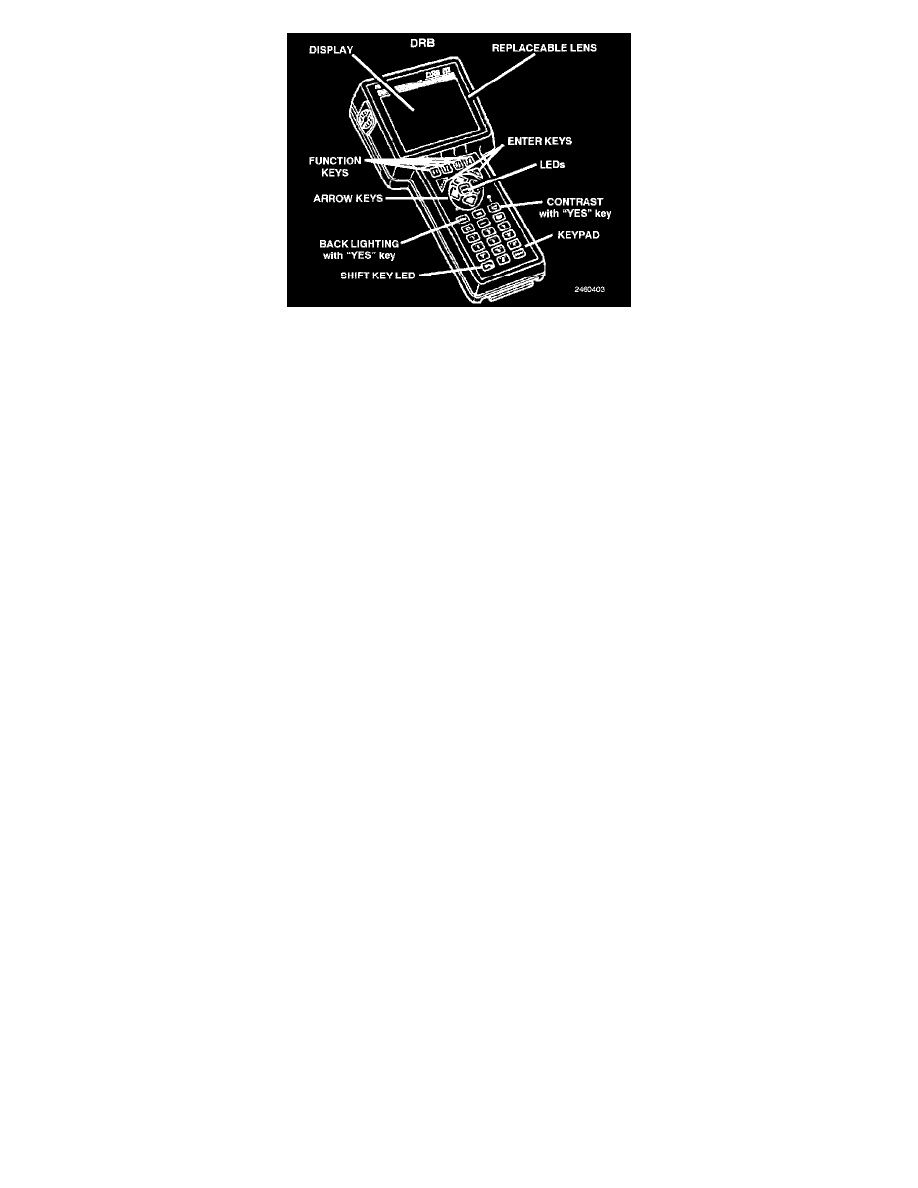RAM 1500 Van V8-5.2L CNG VIN T (1999)

DRB III Scan Tool
Display Is Not Visible
Low temperatures will affect the visibility of the display. Adjust the contrast to compensate for this condition.
Enhanced Accident Response (Highline CTM Only)
ENHANCED ACCIDENT RESPONSE (Highline Only)
If the Airbag Control Module (ACM) deploys the airbags, a message is transmitted over the CCD bus to the CTM module to unlock the doors. The
interior lights will be turned ON 10 seconds after getting zero speed message on the CCD bus.
In addition to unlocking the doors, the lock feature will be disabled for a predetermined amount of time following the deployment. Once the
ignition key has been cycled to the "OFF" position, normal operation will resume.
Diagnostics
DIAGNOSTICS
Gauges
The instrument cluster will not store any DTC's. Because the engine controller PCM gathers all the gauge information and sends it to the cluster
via the bus, it is the controller's responsibility to monitor these inputs and store DTC's for them. For this reason the first item to be checked
regarding a gauge problem (except oil pressure) should be the engine controller for any DTC's relating to the gauge in question. There are DTC's
associated with all the gauges except for the oil pressure gauge. When diagnosing gauges, the input that is used for gauge message (fuel level
sender for example) must be valid. Because of OBD II requirements, most of the information used for monitoring the OBD II system happens to
be the same information used by the controller to formulate the gauge bus messages. OBD II requirement state that the fuel level sender must be
checked for rationality. This includes determining if the sending unit voltage is too high or too low or if the voltage hasn't changed over time. If the
PCM has determined that the sender information isn't valid, it will send a diagnostic trouble code. The presence or absence of the fuel level
sending code in the PCM is an important factor to determine whether a fuel gauge problem is in the sending unit or the cluster. The same situation
is used in all cluster diagnostics related to gauge operation with the exception of the oil pressure gauge. OBD II requirements do not include oil
pressure monitoring. Therefore, oil pressure diagnostic would dictate that a mechanical oil pressure gauge be attached to the engine for absolute
verification of oil pressure readings.
Hard Wired Lamps
The cluster contains several hard wired lamps described earlier. The lamps are set up in two configurations. Either the cluster supplies power and
ground is supplied by the circuit being monitored or the lamp is supplied ground by the cluster and power comes from a module or other device.
Refer to the schematic for the specific details on the lamp in question. Verification of the bulb filament may be required in cases of an inoperative
lamp. This will require removal of the cluster and bulb in question.
NOTE: THE BRAKE, TRANS TEMP, CHECK GAUGES, SEAT BELTS AND AIRBAG WARNING LAMPS ARE LED'S, ALL OTHER ARE
BULBS. IF ANY LED'S ARE DEFECTIVE,THE INSTRUMENT CLUSTER MUST BE REPLACED.
CCD Controlled Lamps
The cluster contains several CCD controlled lamps as described earlier. These lamps are part of the diagnostic self-test. When entering the self-test
mode, operation of these lamps can be observed. If the bulb fails to operate during the self-test and the bulb filament is good, the cluster assembly
will need to be replaced.
NOTE: A FLASHING SEAT BELT LAMP INDICATES THAT THE AIRBAG WARNING LAMP IS NOT OPERATING PROPERLY.
Mechanical Instrument Cluster Description
MECHANICAL INSTRUMENT CLUSTER (MIC)
